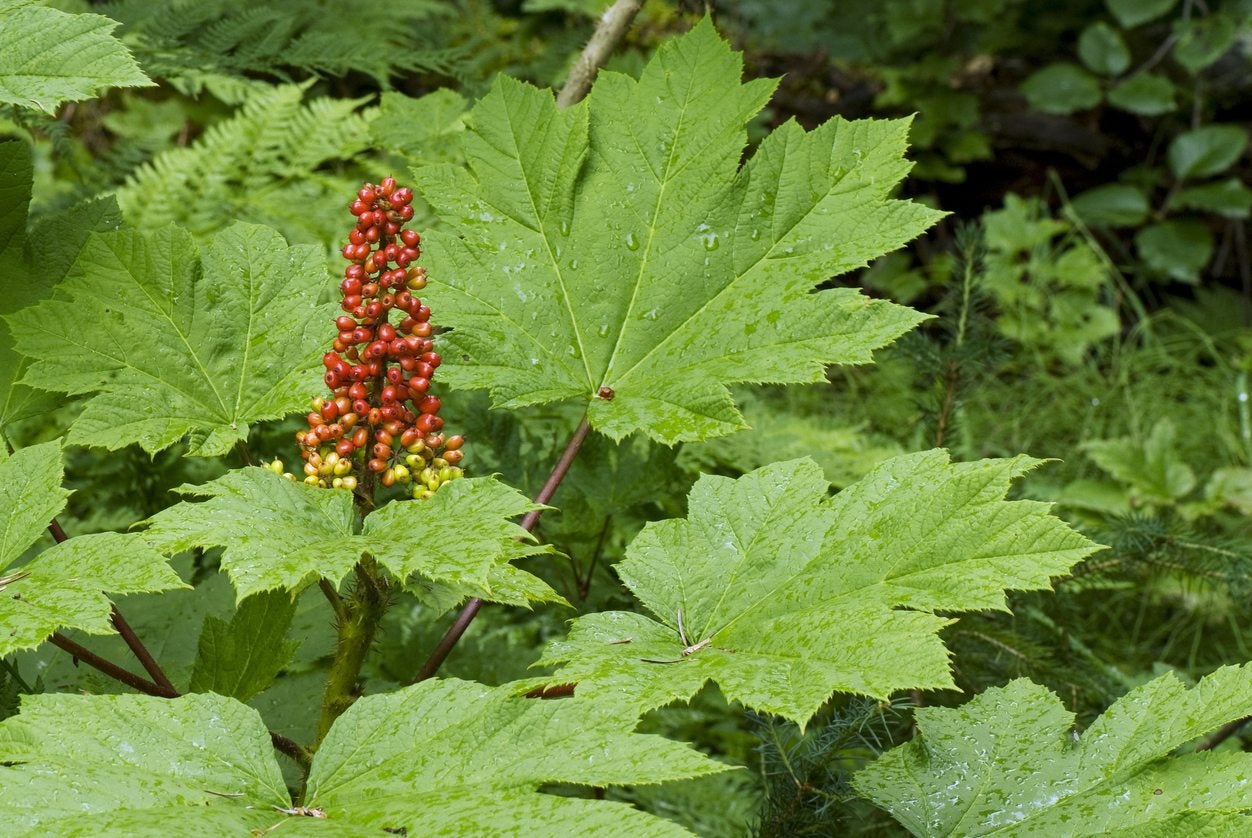Oplopanax Devil’s Club: Devil’s Club Plant Information And Growing Conditions


Devil's club is a ferocious Pacific Northwest native plant. With its wicked spines and impressive height, it makes an interesting conversation point in the garden and as part of a natural landscape. Oplopanax devil's club is perfect for shady areas of the garden where soil is nitrogen rich and moist. If you are looking for a unique, but native specimen, a devil's club growing in your garden will provide a wonderful surprise and many seasons of interest.
Devil's Club Information
Devil's club plant (Oplopanax horridus) is a historical medicinal and herbal plant used for centuries by First Nations people. It is also known as devil’s walking stick or bear’s claw. Oplopanax devil's club is found from Alaska down through the western-most Canadian provinces and into Washington, Oregon, Idaho and Montana. It is also found in the Great Lakes area. The plant is well armored, with spines of many different sizes decorating the stems and even undersides of leaves. Leaves are reminiscent of maples and the plant can grow 3 to 9 feet (0.9-2.7 m.) in height. The plant also produces panicles of white flowers which become thick clusters of red berries, favored by bears and other wild animals.
Devil's Club Plant Uses
Devil's club has medicinal properties, but it's also been known to be used for fishing lures, charcoal, and to make tattoo ink. Other uses include deodorant and lice control. No devil's club information would be complete without mentioning some of its traditional uses. Tribal medicine indicates that the plant was used to treat colds, arthritis, digestive tract issues, ulcers, and even diabetes. It was also used to combat tuberculosis and as a purgative. Is devil's club poisonous? All the literature that I have read states it is used as a medicine but no mention is made of its toxicity. The plant is certainly safe to have in the landscape, but it does have fairly wicked spines, so ensure it is out of the reach of small children and pets. Outside of its medicinal uses, devil's club was thought to have spiritual powers. Sticks of it were used to ward off evil spirits.
Devil's Club Growing Tips
To enjoy this amazing plant in your garden, find it in a native garden center. Never harvest wild plants from nature. Choose a shady to semi-shady location where drainage is good but there is plenty of organic material to keep moisture in the soil. Mulch around the plant after installation. Keep the plant moderately moist but not soggy. Devil's club doesn't need much fertilizing, but adding some well-rotted compost or leaf litter around the root zone will enhance its health. Cut off any damaged or dead leaves as they occur. This cousin of wild ginger will drop leaves after a cold snap, but new ones form in early spring. Enjoy the strange architecture of the naked plant but be careful of those stinging spines!
Gardening tips, videos, info and more delivered right to your inbox!
Sign up for the Gardening Know How newsletter today and receive a free copy of our e-book "How to Grow Delicious Tomatoes".

Bonnie Grant is a professional landscaper with a Certification in Urban Gardening. She has been gardening and writing for 15 years. A former professional chef, she has a passion for edible landscaping.
-
 8 Perfect Flowers To Plant With Tomatoes To Boost Yields & Banish Pests
8 Perfect Flowers To Plant With Tomatoes To Boost Yields & Banish PestsDon’t forget flowers when choosing companion plants for your tomato beds or pots. These pretty, fragrant blooms add beauty but are also highly beneficial.
By Mary Ellen Ellis
-
 Want The Longest Lasting Hydrangea Flowers? Grow These 8 Panicle Hydrangea Varieties
Want The Longest Lasting Hydrangea Flowers? Grow These 8 Panicle Hydrangea VarietiesFor ornamental shrubs that deliver the longest flowering seasons with plush blooms and delicate hues, these panicle hydrangea varieties are essential in your yard
By Tonya Barnett